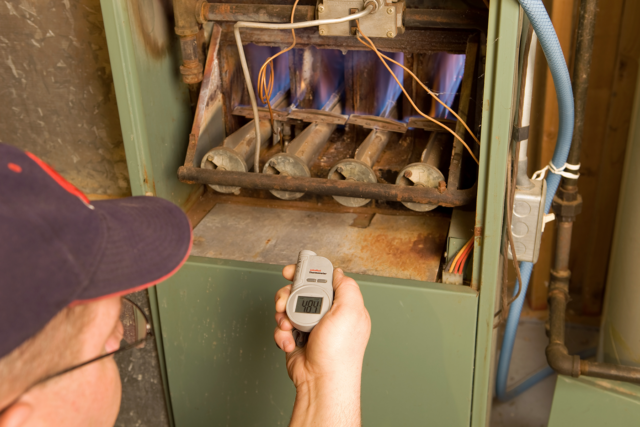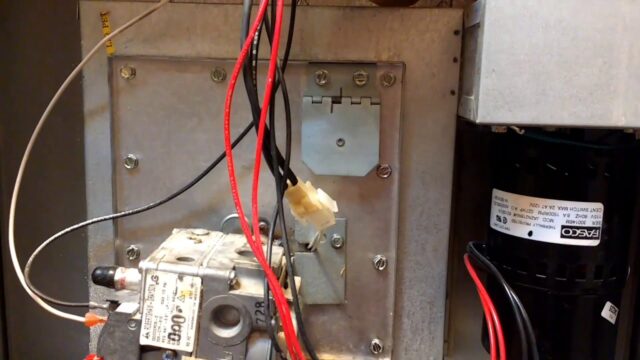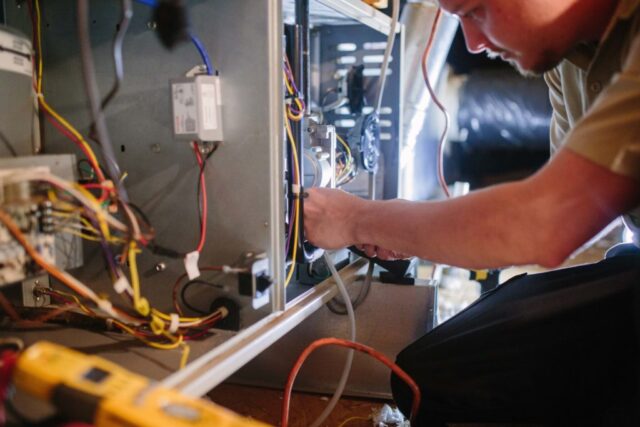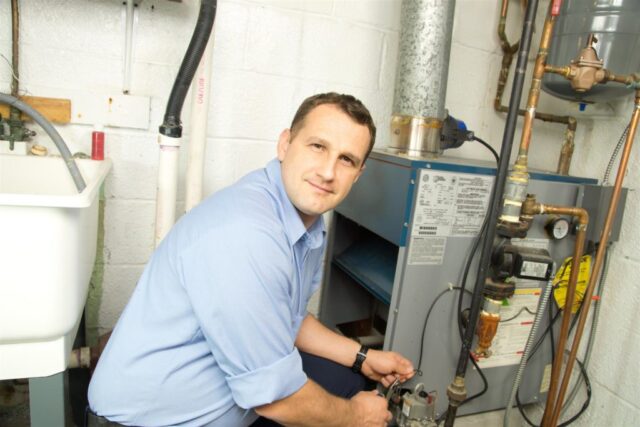
Are you having issues with your furnace?
Does it seem like the ignitor isn’t working correctly? If so, then testing the furnace ignitor is a great place to start.
Knowing how to tell if your furnace ignitor is bad can help diagnose any potential problems and make sure that everything runs smoothly.
In today’s blog post, we’ll go over what an ignitor does and how to properly test one for efficiency.
So let’s get started!
If you need heating and air conditioning services in Ashburn or one of the surrounding areas in Virginia, you should reach out to an experienced HVAC company, like Clover Services.

How to tell if your furnace ignitor is bad: A homeowner’s guide
If your furnace isn’t working correctly, it could be due to a faulty ignitor. Fortunately, testing your furnace ignitor is a relatively easy process.
Here’s a step-by-step guide that you can use if you want to learn how to test a furnace ignitor:
Step 1: Turn off the power
Before you start testing, turn off the power to your furnace. You can complete this step by turning off the switch on the furnace or by shutting off the circuit breaker. This is a crucial safety step, as it will prevent electrocution or damage to your furnace.
Step 2: Locate the furnace ignitor
The furnace ignitor is typically located near the burner in your furnace. You’ll need to remove the access panel to get to it. In most furnaces, the ignitor will look like a small, metal rod or blade.
Step 3: Inspect the ignitor
Before testing the ignitor, make sure it’s clean and free of any debris or dust. If it looks dirty, you may need to clean it with a soft cloth or brush.
Step 4: Test the resistance
Using a multimeter, you can easily test the resistance of the ignitor. Set the multimeter to the “ohms” setting and touch the two probes to the metal ends of the ignitor. If the ignitor is working correctly, it should register a resistance of 50 to 400 ohms. If the resistance is outside of that range, then it’s likely that the ignitor is faulty and needs to be replaced.
Step 5: Check for cracks
Another way to test the ignitor is to visually inspect it for cracks or damage. If the ignitor is cracked or damaged, it won’t be able to create enough heat to ignite the gas. In that case, it’s necessary to replace the ignitor.
Step 6: Test for continuity
In some furnaces, you can test the ignitor for continuity. To complete this step, set your multimeter to “continuity” and touch one probe to the metal base of the ignitor and the other probe to the metal tip. If the circuit is complete, then the ignitor is working correctly. If there’s no continuity, then the ignitor needs to be replaced.

Tips for Preventing Ignitor Failure
Regular Maintenance: Schedule regular maintenance for your furnace, including professional inspections and cleaning. This can help identify any potential issues with the ignitor before they become major problems.
Keep the Area Clean: Keep the area around your furnace clean and free from dust, debris, and flammable materials. A clean environment reduces the risk of contaminants damaging the ignitor.
Change Air Filters: Regularly change or clean the air filters in your furnace. Clogged or dirty filters can restrict airflow and cause the furnace to work harder, putting strain on the ignitor.
Avoid Excessive Cycling: Minimize frequent on/off cycling of your furnace. Constant cycling can put additional stress on the ignitor and decrease its lifespan.
Maintain Proper Ventilation: Ensure that the furnace’s intake and exhaust vents are clear and unobstructed. Proper ventilation helps maintain consistent airflow and prevents overheating of the ignitor.
Use High-Quality Filters: Invest in high-quality air filters that effectively trap dust, pollen, and other airborne particles. This helps prevent the accumulation of debris on the ignitor.
Monitor Gas Pressure: Regularly check and maintain the gas pressure in your furnace. Low or fluctuating gas pressure can affect the ignitor’s performance and lifespan.
Keep the Ignitor Dry: Avoid exposing the ignitor to excessive moisture or water. Moisture can damage the ignitor and lead to premature failure.
Follow Manufacturer’s Guidelines: Read and follow the manufacturer’s guidelines for your furnace, including recommended maintenance procedures and replacement schedules. Adhering to these guidelines can help prevent ignitor failure.
Be Mindful of Power Surges: Install surge protectors or voltage regulators to protect your furnace from power surges. Sudden voltage spikes can damage the ignitor and other sensitive components.
Professional Installation: When replacing or installing a new furnace ignitor, consider hiring a professional technician. Proper installation ensures that the ignitor is correctly aligned and connected, reducing the risk of failure.
Educate Yourself: Learn about your furnace’s operation and maintenance requirements. Understanding how the ignitor works and what signs to look out for can help you detect and address issues early on.
Remember, if you suspect any problems with your furnace or ignitor, it’s always best to consult a qualified HVAC technician for proper diagnosis and repair.

Hiring professionals
Hiring an HVAC technician is essential when it comes to dealing with furnace ignitor issues. These professionals possess the necessary expertise and experience to accurately diagnose and repair problems. HVAC technicians are trained to handle various heating systems, including furnaces, and they understand the intricacies of ignitor functionality. They can efficiently troubleshoot and identify the root cause of ignitor failure, saving you time and frustration. Moreover, HVAC technicians have access to specialized tools and equipment required for proper diagnosis and repair. Their knowledge of safety protocols ensures that repairs are conducted in a secure manner. By hiring an HVAC technician, you can have peace of mind knowing that your furnace ignitor is in capable hands.
How to tell if your furnace ignitor is bad — Conclusion
In conclusion, testing your furnace ignitor is an important step in diagnosing any issues with your furnace.
By following these simple steps, homeowners can learn how to test furnace ignitors to make sure they’re working correctly and efficiently.
If you’re experiencing any issues, it’s always best to contact a professional HVAC technician to help you address and fix any problems with your furnace.









